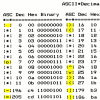Ask the Experts / Ride speed mechanics
-
 17-May 16
17-May 16
-

 F0ndue
Offline
F0ndue
Offline
I've been trying to figure out how the game actually calculates/simulates the speed of rollercoasters for quite some time now, since it seems to work in a certain pattern, but one I haven't been able to figure out yet.
As an example I am working on a launched coaster. I can vary the launch speeds a lot, but at the lowest point of the ride it still peaks at a fixed speed of around 60 mph. It takes a much higher launch speed to get a few more mph just at the lowest point, and I feel like the speed calculation works more in a categorical than a linear style (as in no matter how fast the initial speed, as long as it doesn't exceed a certain limit it will always result in the same speed at a certain point of the ride.
So, can anybody with a bit more understanding of the game mechanics explain how it works?
-

 inthemanual
Offline
Friction calculations results in a terminal velocity. It's possible that those are too low/high causing it to reach that terminal velocity too easily.
inthemanual
Offline
Friction calculations results in a terminal velocity. It's possible that those are too low/high causing it to reach that terminal velocity too easily. -

 X7123M3-256
Offline
X7123M3-256
Offline
Well, I was going to look at the actual code but it's really confusing. Here it is if you want to look at it. Instead I'll just make some empirical observations:
- Friction appears to be quadratic, which means it increases with the square of velocity and it is zero when the train is not moving (that suggests the game takes into account air resistance but not friction). It also means that the trains will never quite stall on level track, though they will go really, really slowly. As inthemanual says, that means there is a terminal velocity, though I would not expect to hit it with any default ride as it's usually in the several hundred mile per hour range (which is about correct for a real ride according to my pathetically small sample)
- The G forces are lower than they should be given the radii of the turns and the displayed velocity of the train. I don't yet know if the displayed velocity matches the actual velocity - if not, the units I used were inconsistent. I'll probably have a look at that later.
- Weight of the passengers is taken into account, a heavier train runs slightly faster
- Longer trains have less friction, but I am still not sure of the exact nature of the game's friction.
The behaviour you are observing is to be expected, and I have noticed the same thing on my model coasters. If you have a resistive force that increases with velocity - which can come from air resistance, or indirectly since increased G-forces mean more friction (IRL, but apparently not in the game), then any excess velocity that the train has will lead to more resistance, so that by the end of the layout most of the extra velocity has gone.
 Tags
Tags
- No Tags